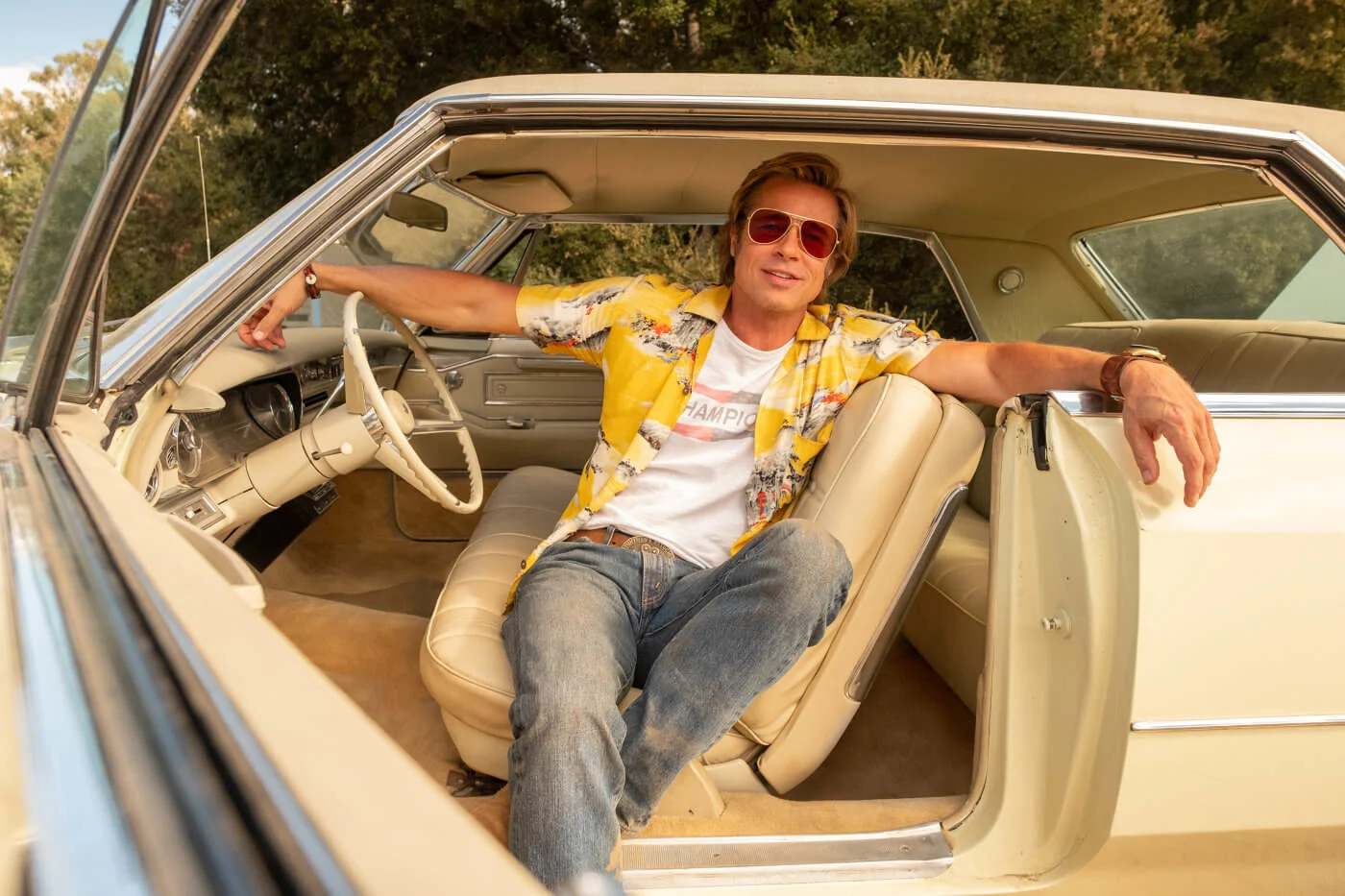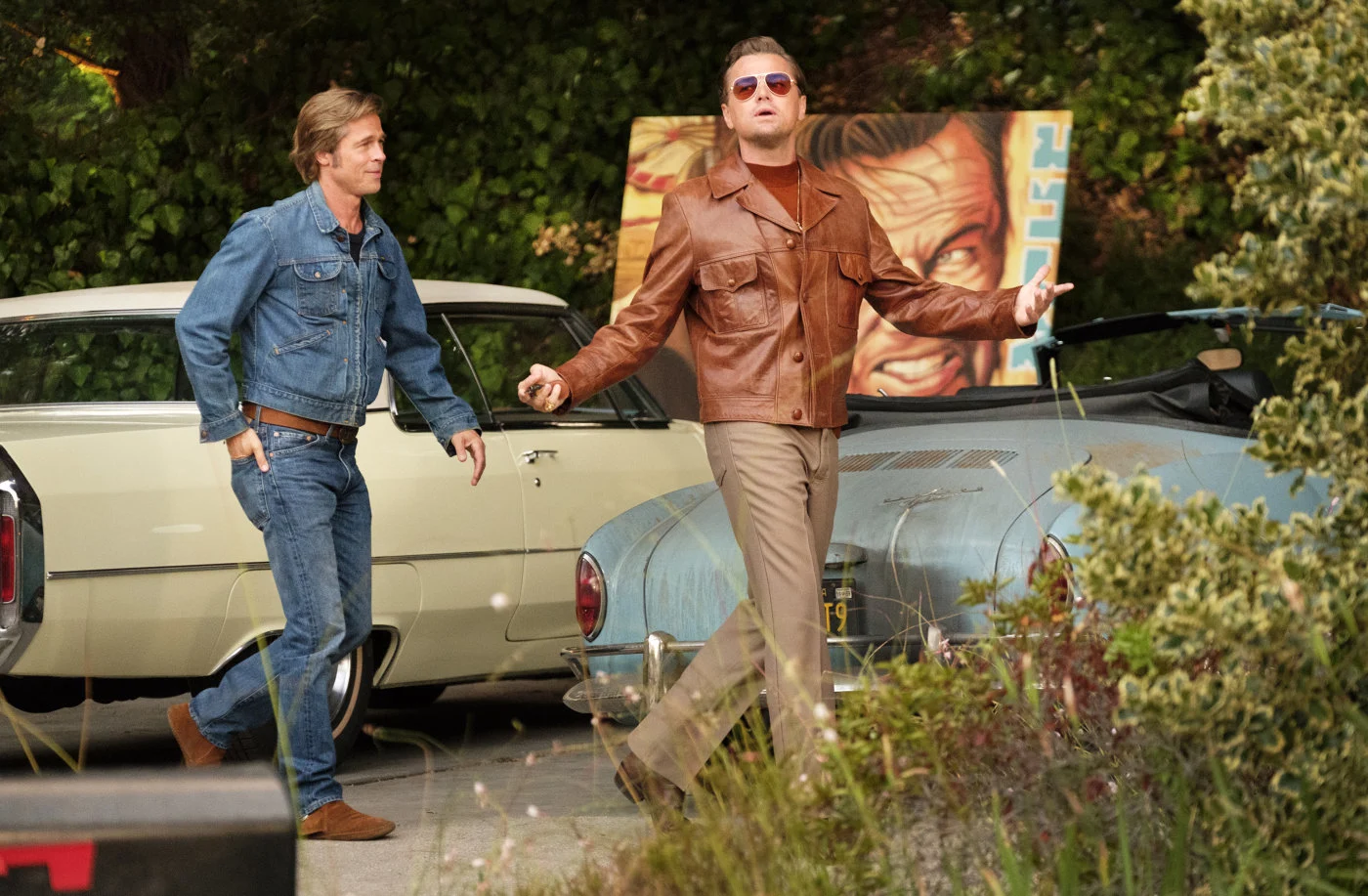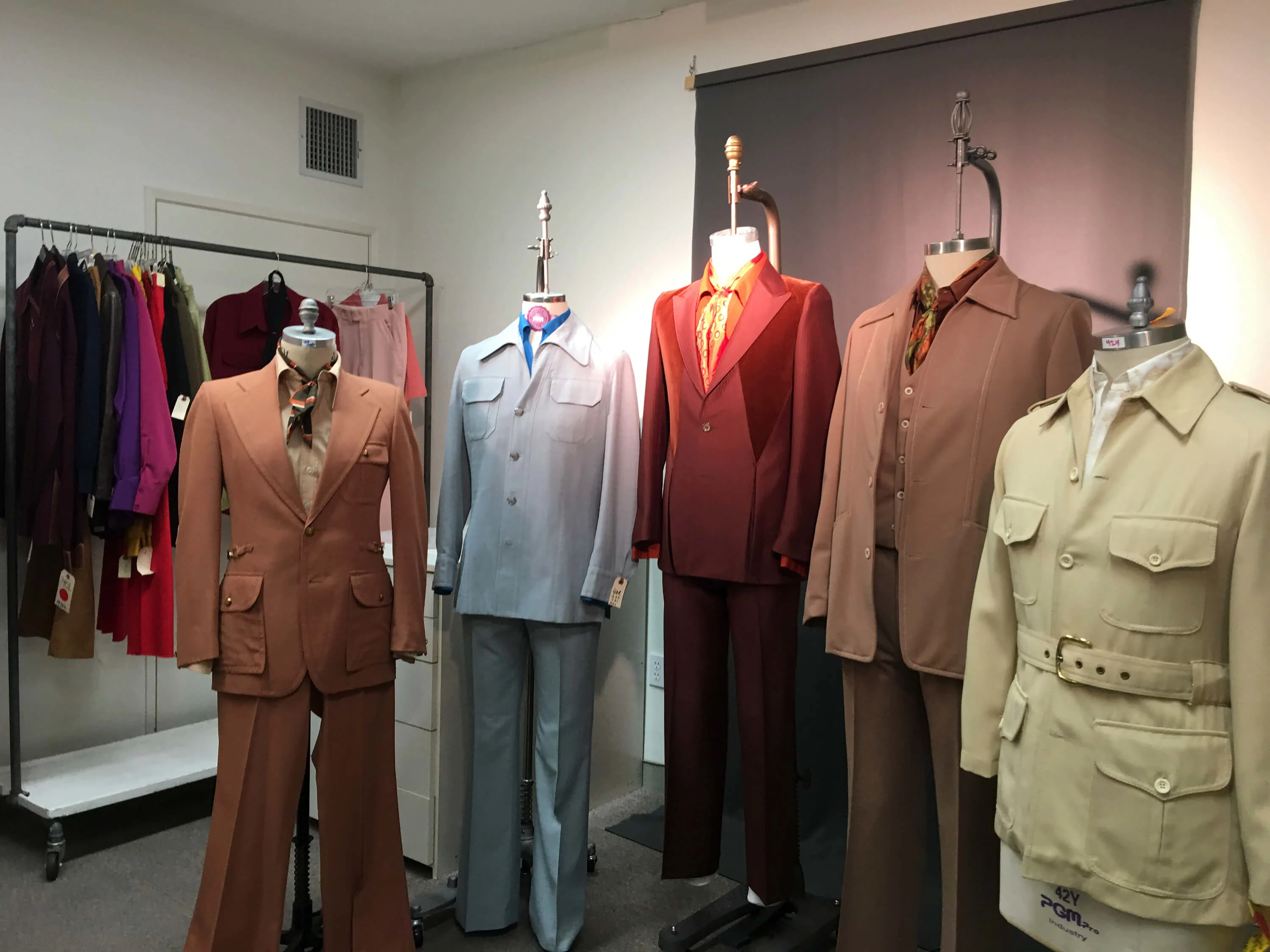

Oscar-nominated costume designer Arianne Phillips’ CV reads like a who’s who of Hollywood. Throughout her career she has worked on generation defining films, from Girl, Interrupted to Walk The Line to A Single Man and here, talks to Ben Falk about her next big triumph, Once Upon A Time in Hollywood.
Film stills © Sony Pictures Releasing Switzerland GmbH
Faced with the challenge of costuming Quentin Tarantino’s latest movie Once Upon a Time in... Hollywood, Arianne Phillips’ best moment came when she was rifling through a box of vintage belt buckles.
“If you were a member of the Stuntman’s Association you could get one of these buckles,” says Phillips. “I happened upon one deep in the costume archive at Warner Bros. I was digging through Western belt buckles and was like, ‘This is it!’”
The accessory ended up around the waist of Brad Pitt, playing stuntman Cliff Booth, best friend to Leonardo DiCaprio’s fading TV star Rick Dalton in Tarantino’s tale of 1969 Los Angeles and the Manson Family murders of Sharon Tate. And while most of the audience will never know the buckle’s provenance, its presence helps explain the unique skills of a costume designer.

“A costume is like a beam-me-up suit,” reveals Phillips. “As a costume designer you have the opportunity to help the actors access this character, whether it’s the kind of shoes they wear, or the length of skirt. I’m always really aware of what will serve the actor, maybe you won’t see it on film maybe you will, but it’s a talisman of sorts.”
Phillips herself is something of a talisman to various artists and filmmakers, from Tom Ford whose two films she worked on, to Madonna, with whom she’s collaborated for 22 years.
“She doesn’t play it safe and I’ve learned a lot from her,” says Phillips. “I kind of forget, like, was I that way before I met her or did I learn that from her?”
Growing up the daughter of writers in California, she started to understand how clothes helped tell stories from an early age. “We had a big trunk full of fancy costumes and dress-up clothes which were from the local car boot sales and flea markets and I was encouraged by these bohemian, artistic parents to use my imagination, which I did,” she remembers. “At the same time, I was deprived of Barbie dolls. My mother was a feminist and didn’t believe Barbie dolls were the right message. So of course I craved them.”
Arianne grew obsessed with pop culture, particularly British music and fashion. “I really studied every inch of The Face magazine and i-D and the NME and Melody Maker,” she says. She decided to drop out of college in California and head to mid-80s New York (promising her parents she would return) with big dreams of being creative and telling stories, even if she didn’t really know how she was going to actually do it.

I dressed multiple mannequins and Quentin was able to tell me in three dimensions what was right for him.
With the New York creative scene at the forefront of the zeitgeist, Phillips started to meet the movers and shakers in the city’s clubs “in a very scrappy way”, who recognised her passion and skill for storytelling and narrative. Work on music videos for artists like Lenny Kravitz followed, where she learned “how costume was significantly different from fashion”, not just about being cool but about “pushing the story along and using clothing as a way to create a character.”
She soon broke into movies – her filmography includes everything from Hedwig and the Angry Inch and A Single Man, to Kingsman: The Secret Service, W.E. and Walk the Line. The latter two films both scored her Oscar nominations.

Once Upon a Time in…Hollywood is her first collaboration with Quentin Tarantino and despite building a career working with iconic personalities, she was, if not exactly trepidatious, then curious about working with him having heard lots of stories about his process.
“When we first met, I actually asked him straight out, ‘hey, are these rumours true?’ I had heard crazy rumours that you get all the costumes together and Quentin does the fitting himself with the actor and you wait outside the room. And he was like, ‘No!”
She started on the movie fourteen weeks before shooting and her process began by immersing herself in research. “Not only did I have biographical research based on true events and real people to research, I had a fictional narrative at the core of the film, so it was a wonderful hybrid of using both,” she says.

As a writer/director with a very specific vision, Tarantino’s script was rich in detail, even about costume.
“I took everything that was in the script that was costume and talked about it and developed that research,” explains Phillips. “He said, ‘make the jacket like I wrote it and then bring me something you think is good.’”
From there, she and her team scoured costume houses, libraries and the internet for ideas and inspiration. She does draw (badly in her opinion) and for this movie worked with a couple of illustrators. That led to “these really fun show-and-tells where we had multiple mannequins and I dressed them and Quentin was able to tell me in three dimensions what was right for him.”


Just because something existed back then doesn’t mean it has any place in our movie!
She also had some more direct access to the source material.
“We had the incredible privilege of having Debra Tate, Sharon Tate’s sister, as a consultant,” she says. “I was super-lucky to see some of Sharon’s clothes that Debra owned and she was kind enough to loan us some of Sharon’s jewellery, which Margot wore in the film.”
Phillips is used to dressing stars, but Brad Pitt and Leo DiCaprio in 1969 period costume offered a unique prospect.
“I felt it was an opportunity to see Brad Pitt in denim,” she says. “Brad is such an American iconic actor, I felt there was a beautiful symmetry between who his character is and the persona around Brad in that role.”

Most of Pitt’s clothes were made for the star, including a mustard yellow Asian-patterned Hawaiian shirt and moccasins. But found items did sneak in as well, like the aforementioned belt buckle.
“I do buy pieces and they do make the film,” she says. “Sometimes not on the lead actor, but they’ll make it onto a background artist. Or there’ll be something about a jacket that will inspire me to make a new jacket.”
In fact, DiCaprio’s two main leather jackets in the film are actual vintage pieces. These were accessorised with a medallion made bespoke by British designer Stuart England. “There’s a kind of masculinity to them, Steve McQueen famously wore one and you saw them on Burt Reynolds and all these great guys from that time.”


The result of her work is a movie set 50 years ago that is authentic but maintains Tarantino’s stylised aesthetic. What you won’t see though, is some of the more kitschy trends of the time.
“Quentin and I both cannot stand fringe or tie-dyed,” she laughs. “That’s the thing about doing period films – just because it existed doesn’t mean it has any place in our movie!”
Phillips never did fulfil that promise to go back to college. Instead, she has acquired a different kind of education.
“I would say being a costume designer is being a people detective,” she says. “That’s the thing I love about costume design, I love people and I love people’s stories.”

